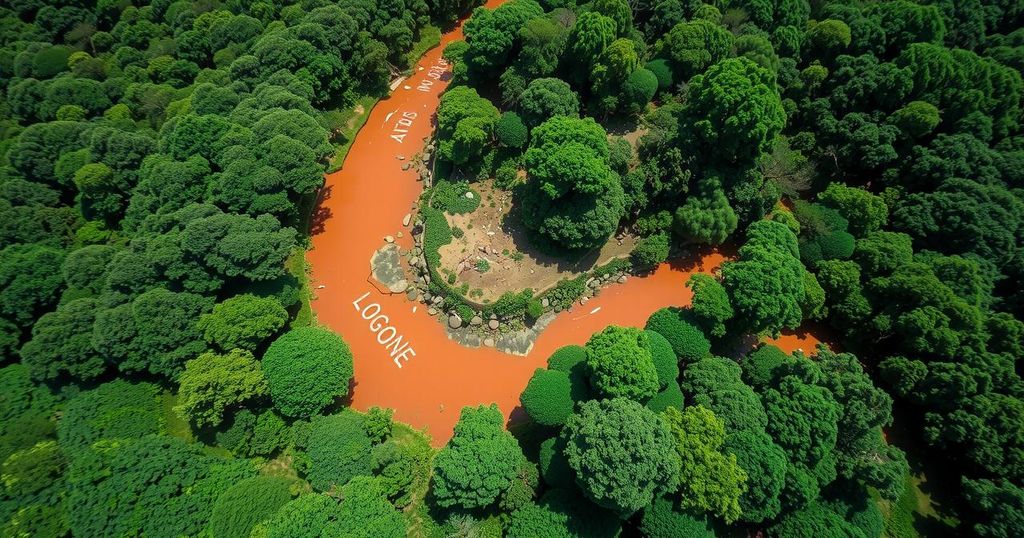Exploring Waza National Park: An Aerial Perspective from Copernicus Sentinel-2

The Copernicus Sentinel-2 mission captures the landscape of Waza National Park in Cameroon, highlighting its biodiversity and ecological significance. The park, bordered by Chad and Nigeria, is a UNESCO World Heritage site and sustains local communities reliant on seasonal flood patterns for agriculture and fishing. The image portrays the effects of seasonal changes on the region’s ecosystem and land use.
The Copernicus Sentinel-2 mission provides a captivating aerial view of Waza National Park in Cameroon, showcasing its remarkable landscape. This park, located in the northern region, borders Chad to the east and Nigeria to the west, encompassing approximately 1,700 square kilometers and lying merely 10 kilometers from both national borders.
Waza National Park, depicted on the left side of the image, represents Cameroon’s most biodiverse wildlife reserve, hosting species such as lions, elephants, giraffes, antelopes, and a wide variety of birds. It earned its status as a UNESCO World Heritage biosphere reserve in 1979, highlighting its ecological significance.
The town of Waza is situated at the park’s western perimeter, identifiable as a small yellowish patch surrounded by greenery. The expansive green area surrounding the park comprises the Logone floodplain, an integral part of the Lake Chad basin. The visible lushness can be attributed to the seasonal flooding of the Logone River, depicted as a meandering brown line to the east, which delineates the border between Cameroon and Chad.
This region’s ecosystem relies on a cyclical pattern of dry and wet seasons. The rainy season, occurring from mid-May to mid-October, transforms the area into a temporary wetland that supports various grasses, reeds, and seasonal water bodies. Over 100,000 residents live in proximity to the park, depending heavily on flood patterns for sustenance through fishing, grazing, and agricultural practices. Agricultural patches are observable within the image, particularly the largest located in the lower left section adjacent to the Logone River.
This imagery, captured in November 2024, represents a time when floodwaters typically begin to recede, leaving the earth rich and fertile. Signs of the approaching dry season are evident; while the park retains its natural vegetation, adjacent lands transition into post-harvest stubble or fallow fields, reflecting brown hues.
In the right section of the image, the Chari River, the main tributary of Lake Chad, is visible in green. It merges with the Logone River to the north before advancing into Lake Chad, not pictured here. N’Djamena, the capital city of Chad, can be seen as a large grey expanse at the confluence of the Chari and Logone rivers, situated at the top of the image.
In summary, the Copernicus Sentinel-2 mission vividly illustrates the geographical and ecological characteristics of Waza National Park in Cameroon. The park’s unique biodiversity, the surrounding Logone floodplain, and the cyclical nature of its ecosystem play crucial roles in the lives of local residents. This imagery encapsulates the intricate relationship between natural landscapes and human livelihoods in this region.
Original Source: www.esa.int






